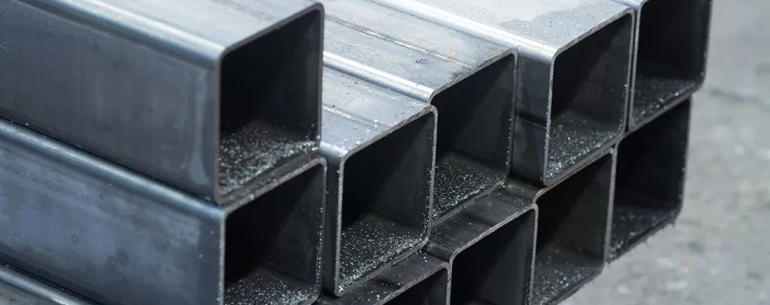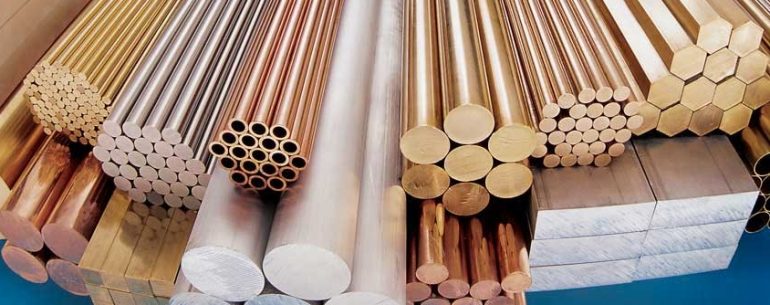Aluminium is a highly versatile and lightweight metal, prized for its corrosion resistance, durability, and aesthetic appeal. It is widely used across various industries, from aerospace and automotive to construction and packaging. Common forms of aluminium include aluminium sheets, aluminium hollow sections, aluminium angle bars, aluminium channels, and aluminium suppliers in Singapore who provide these products for diverse applications. However, despite aluminium’s inherent resistance to corrosion, further protection is often needed to enhance its performance and longevity, particularly in harsh environments.
This is where aluminium coatings come into play. Coatings can improve the material’s resistance to corrosion, offer aesthetic finishes, and protect against wear and tear. In this article, we’ll explore the different types of coatings for aluminium and how they can benefit products like aluminium sheet, aluminium hollow sections, aluminium angle bars, and more.
1. Anodizing
Overview:
Anodizing is an electrochemical process used to create a thick, protective oxide layer on the surface of aluminium products such as aluminium sheet, aluminium channel, and aluminium hollow sections. This oxide layer is not only corrosion-resistant but can also be dyed to add color, enhancing the aesthetic appeal of aluminium components.

Benefits:
- Enhanced Corrosion Resistance: Anodized aluminium is highly resistant to corrosion, making it ideal for outdoor applications.
- Durability: The anodized layer is durable, resistant to scratching, and offers an abrasion-resistant surface.
- Aesthetic Customization: Anodizing allows for the addition of vibrant colors, which is often used in architectural designs or decorative purposes.
- Improved Adhesion: Ideal for adhesives and paints, anodized surfaces improve bonding strength.
Applications:
Anodized aluminium is often used in aluminium hollow sections for structural framing, in architectural elements such as window frames, and in aluminium angle bars for decorative and protective finishes. Anodized coatings are also used in the aerospace and electronics industries for components like aluminium sheets and aluminium channels.
2. Powder Coating
Overview:
Powder coating is a popular dry finishing process used for aluminium sheet, aluminium hollow sections, aluminium angle bars, and aluminium channels. The process involves applying a dry powder to the aluminium surface using an electrostatic charge. The coated surface is then cured using heat to create a durable, hard finish.

Benefits:
- Durability: Powder coating provides a hard, long-lasting finish that is resistant to chipping, scratching, fading, and wear.
- Aesthetic Variety: Available in a wide range of colors, textures, and finishes, powder coating offers flexibility in design.
- Environmental Benefits: Unlike liquid paints, powder coatings produce fewer VOCs, making them an environmentally friendly option.
- Corrosion Resistance: Powder coatings are excellent at preventing corrosion, especially when exposed to harsh environmental conditions.
Applications:
Aluminium angle bars, aluminium sheets, and aluminium channels are commonly powder-coated for both industrial and architectural applications. Powder-coated finishes are especially useful in products exposed to the outdoors, like window frames, doors, and outdoor furniture.
3. Paint Coating
Overview:
Paint coating is one of the most common methods of applying color and protection to aluminium products like aluminium plate, aluminium hollow sections, and aluminium angle bars. Unlike powder coating, paint coatings are liquid-based and applied using brushes, rollers, or spray guns. They can be formulated to offer a wide variety of properties, including UV resistance, anti-graffiti protection, or heat resistance.
Benefits:
- Customizable Finishes: Paint coatings can be customized to achieve various finishes, including matte, gloss, or satin.
- Flexibility: Paint can be tailored to offer specific properties, such as heat resistance or anti-fingerprint capabilities.
- Wide Color Range: Paint coatings are available in almost any color and texture, offering vast design possibilities.
- Cost-Effectiveness: Generally, paint coatings are a more affordable option for coating large quantities of aluminium hollow sections or aluminium sheets.
Applications:
Painted aluminium is frequently used in automotive parts, architectural facades, and household products like appliances. Aluminium channels used for framing or signage often undergo paint coating for both protection and aesthetic appeal.
4. Clear Coating
Overview:
Clear coatings are transparent finishes applied to aluminium products to provide a protective layer without altering the natural appearance of the metal. This coating type is particularly useful for preserving the sleek look of aluminium angle bars, aluminium plates, and aluminium hollow sections while enhancing their resistance to corrosion and wear.

Benefits:
- Preserves Natural Look: Clear coatings protect the aluminium without changing its color or texture, allowing the natural shine of the metal to show through.
- Corrosion Resistance: Provides additional protection from oxidation and staining.
- Low Maintenance: Surfaces with clear coatings are easier to clean and maintain.
Applications:
Clear coatings are used on aluminium plates and aluminium hollow sections in architectural and decorative applications, where the natural look of the metal is preferred. Aluminium angle bars used in framing or support structures also benefit from clear coatings for added protection.
5. Chromate Conversion Coating (Alodine)
Overview:
Chromate conversion coating, or Alodine, is a chemical process that creates a thin, protective layer of chromate on the surface of aluminium. This coating is often used in the aerospace and defense industries, and it’s ideal for aluminium hollow sections, aluminium sheets, and stainless steel c channels that require extra corrosion protection without compromising conductivity.
Benefits:
- Corrosion Protection: Provides excellent resistance to corrosion, particularly in harsh environments.
- Electrical Conductivity: Unlike other coatings, Alodine coatings do not interfere with the electrical properties of aluminium, making it suitable for electronic components.
- Military-Grade Protection: Meets stringent military and aerospace standards for corrosion resistance.
Applications:
Chromate conversion coatings are commonly used in aluminium plates and aluminium hollow sections for military, aerospace, and automotive applications. Aluminium angle bars and aluminium channels that need to resist extreme conditions also benefit from this type of coating.
6. Electroless Nickel Plating
Overview:
Electroless nickel plating is a method used to apply a uniform layer of nickel to the surface of aluminium. Unlike traditional electroplating, electroless plating does not require an electrical current and ensures consistent coverage, even on complex shapes like aluminium angle bars and aluminium channels.
Benefits:
- Corrosion and Wear Resistance: Electroless nickel plating provides excellent resistance to both corrosion and wear.
- Uniform Coverage: The coating is evenly applied to all surfaces, making it ideal for complex shapes.
- Hard Surface: The plating creates a hard, durable surface, improving the overall lifespan of the product.
Applications:
Electroless nickel plating is widely used in the aerospace, automotive, and manufacturing industries. It is especially useful for aluminium hollow sections and aluminium plates that require enhanced durability and resistance to harsh conditions.
7. Teflon Coating
Overview:
Teflon coating, or polytetrafluoroethylene (PTFE), is a non-stick, low-friction coating applied to aluminium products such as aluminium sheet, aluminium hollow sections, and aluminium angle bars. It is highly valued for its resistance to heat and chemicals.
Benefits:
- Non-Stick Properties: Ideal for applications where materials need to slide easily or not stick to the surface.
- Chemical Resistance: Teflon coatings resist a wide variety of chemicals, making them suitable for harsh environments.
- Heat Resistance: Teflon coatings can withstand high temperatures, making them useful in heat-sensitive applications.
Applications:
Teflon coatings are commonly used in the food processing industry, for aluminium plates and aluminium channels exposed to chemicals or high temperatures. They are also used in components that require low friction, such as certain automotive parts and machinery.
Conclusion
Coating aluminium sheets, aluminium hollow sections, aluminium angle bars, and aluminium channels can significantly enhance their properties, making them more durable, corrosion-resistant, and aesthetically pleasing. Whether you are sourcing from an aluminium supplier in Singapore for industrial or architectural applications, understanding the different types of coatings available will help you make informed decisions. From anodizing and powder coating to Teflon and chromate conversion coatings, each option offers unique advantages suited to specific needs, ensuring that your aluminium products are not only functional but also long-lasting. Contact us for pipe fittings, bright steel flat bars, steel unistrut and flat bars.



